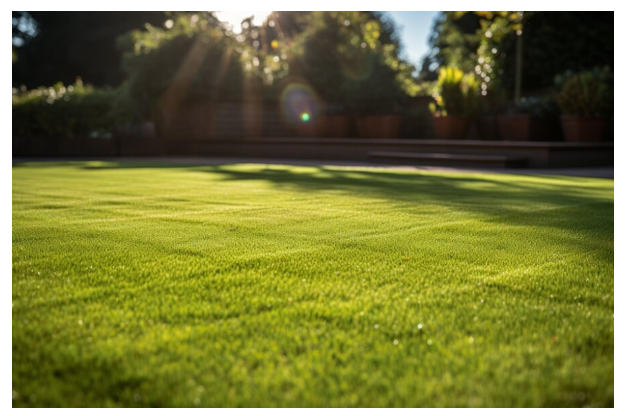Advancing Green Landscaping: Exploring the Future of Hydroseeding Practices
The practice of landscaping and erosion control has long used the technique of hydroseeding. Key to the cultivation of lush, green spaces, hydroseeding involves spraying a slurry of seeds, mulch, and additives onto soil. This method has proven its effectiveness across a range of environments, from stabilizing highway embankments to nurturing new growth in barren areas. The green industry widely acknowledged hydroseeding’s role in quickly establishing plant growth.
Offering a new perspective, this article aims to explore the advancements shaping the future of hydroseeding. It reviews the innovative seed mixtures improving strength and seed sprouting, the method’s lower impact on the environment, and customized solutions designed to varied landscapes. Cost considerations are also detailed, weighing what a hydroseeding company might charge compared to traditional seeding approaches. Finally, we’ll share the future technological advancements set to redefine the green industry’s capability for widespread planting and environmental management.
Advancements in Seed Mixtures
The field of hydroseeding has advanced markedly with the introduction of hybrid seed mixtures, as a result of progress in seed genetics and biotechnology. These innovative seeds are created for greater robustness and higher germination rates, outdoing their traditional counterparts. With the capacity to prosper in diverse soil conditions, these seeds are specifically formulated for hydroseeding.
This advancement is a major step forward in environmental adaptability; the seeds’ versatility underlines their possibility for prosperous growth in changing soil environments. By combining the benefits of hydroseeding with advanced seed genetics, it provides a direct method to effectively repair and enhance landscapes more expansively. Agricultural and land management experts are now ready to use these high-performance seed mixtures, anticipating considerably improved outcomes in both urban and rural settings.
Environmental Benefits
Hydroseeding is a major advancement over traditional seeding methods with its kind stance toward the environment. In this greener method, the slurry that’s sprayed over the soil includes biodegradable materials, which not only minimize environmental disturbance but also bolster sustainability in land management endeavors. It’s a way to plant seeds that nurtures the land rather than depletes it.
Consider the contrast: traditional seeding can disrupt the soil’s natural composition and ecosystems, while hydroseeding aims for harmony, using mixtures that break down naturally. This offers the twofold benefit of securing the soil against erosion and serving as a stepping-stone to sustainable land management.
Customized Solutions
Technological advancements have transformed hydroseeding equipment, adapting it to the various and complex shapes of different landscapes. Manufacturers now design machines capable of adapting to the unique demands of each project, whether tackling the difficulties of steep inclines or the limitations of city environments. This personalization broadens the application of hydroseeding, enabling specialists to create vegetation strategies that were previously impossible with conventional gear.
Such flexibility allows for targeted seeding on varied terrain, enabling experts to promote growth precisely where it’s needed. These specialized machines not just meet environmental requirements but also offer a higher degree of efficiency to projects big and small.
Cost-Effectiveness
Turning to finances, hydroseeding emerges as a notably cost-effective practice for landscaping. Traditional seeding techniques often involve extensive labor and time, leading to increased costs. In contrast, hydroseeding can quickly cover large areas with seed and mulch using fewer workers and greatly reduces labor hours. Tools and machinery used in hydroseeding have improved to cover areas more efficiently.
This increase in productivity leads to lower labor costs – a major part of the project’s final tally. As such, it’s not just the initial lower cost of materials that make hydroseeding economical; it’s also the savings on time, labor, and materials that add up over the duration of the landscaping project, making it an appealing choice for contractors handling large projects or anyone seeking to save money on planting.
Future Innovations
Innovation in hydroseeding is quickly progressing, with promising future prospects due to technological improvements. New methods such as drone-based seeding can elevate land rehabilitation by accessing challenging terrains with remarkable ease. Also, automated systems that monitor plant growth and soil conditions could transform maintenance and care, making sure of the best health of new environments with minimal human input.
As these advanced technologies combine with traditional hydroseeding methods, the procedure becomes more streamlined, precise, and eco-friendly, indicating a positive outlook for the industry, potentially resulting in the broad and economical restoration of diverse environments worldwide.
The progression of hydroseeding highlights the constant innovation within the landscaping and erosion control fields. With advancements in seed mixtures, environmental sustainability, customized solutions, and cost-effectiveness, hydroseeding emerges as a leading method for establishing vegetation in diverse landscapes. As we look to the future, the use of new technologies promises even greater efficiency and environmental stewardship, paving the way for widespread restoration and management of our natural environments.


